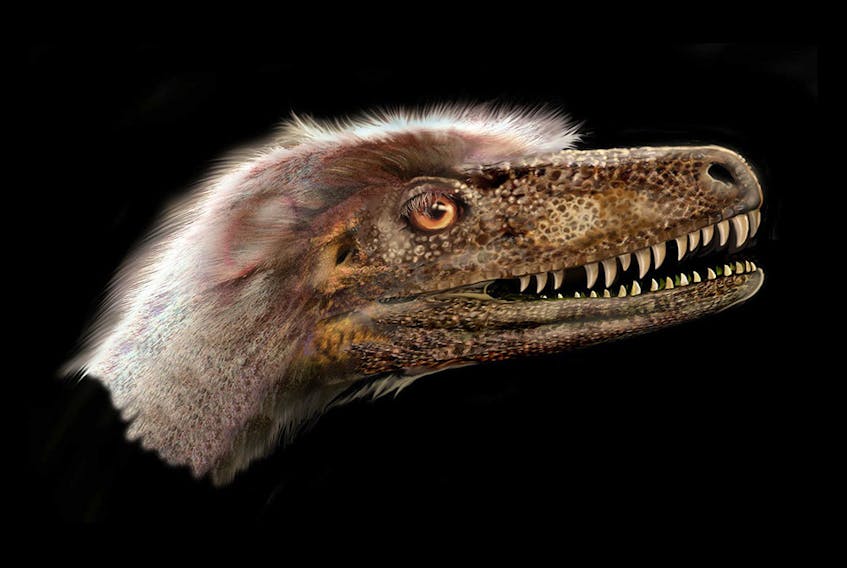Paleontologists at the University of Alberta and Royal Museum of Ontario have discovered a complete skeleton of a small, carnivorous dinosaur, shedding new light on the 76-million-year-old species.
In 2014, U of A paleontologist Clive Coy discovered the “remarkably complete” skeleton of Saurornitholestes langstoni in Dinosaur Provincial Park, the university said in a release Friday.
Saurornitholestes is a small, feathered carnivorous dinosaur part of the dromaeosaurid family — also known as raptors — and was long thought to have been closely related to Velociraptor from Mongolia.
The skeleton was “exquisitely preserved,” with all the bones except for the tail preserved in life position.
“Paleontology, in general, is a gigantic puzzle where most of the pieces are missing. The discovery and description of this specimen represents the recovery of many pieces of the puzzle,” said Phillip Currie, a paleontologist at the U of A.
Previously, Saurornitholestes was only known from fragmentary remains and because of the belief it was related to Velociraptor, some researchers called it Velociraptor langstoni.
The discovery and subsequent research from U of A paleontologists Currie and Coy, along with David Evans and James and Louise Temerty at the Royal Ontario Museum, has changed that belief.

‘A scientific goldmine’
The team’s research focuses on the skull and highlights how Saurornitholestes differs from Velociraptor. It has a shorter and deeper skull than the Velociraptor.
At the front of the skull’s mouth is a flat tooth with long ridges, believed to have been used for preening feathers. The same tooth has also been identified in Velociraptor and other dromaeosaurids.
“Because of their small size and delicate bones, small meat-eating dinosaur skeletons are exceptionally rare in the fossil record. The new skeleton is by far the most complete and best-preserved raptor skeleton ever found in North America. It’s a scientific goldmine,” Evans said.
The research also provides new evidence on how the dromaeosaurid lineage from North America differs from the Asian lineage.
“The new anatomical information we have clearly shows that the North American dromaeosaurids are a separate lineage from the Asian dromaeosaurids, although they do have a common ancestor,” said Currie.
“This changes our understanding of intercontinental movements of these animals and ultimately will help us understand their evolution.”
Further research will examine the rest of the skeleton and analyze the relationships between dromaeosaurids.
Copyright Postmedia Network Inc., 2019









